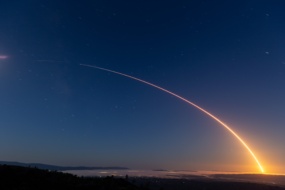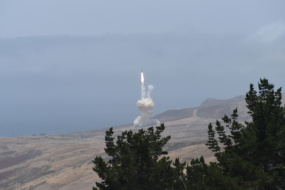Happy Fiscal New Year, Payload readers.
On Oct. 1, fiscal year 2023 (FY23) officially began. As is tradition in recent years, Congress has yet to pass any of the 12 appropriations bills necessary to keep the government running for the next fiscal year.
President Biden signed a continuing resolution (CR) into law on Friday, avoiding a government shutdown and keeping federal programs funded through Dec. 16. While the CR will keep the lights on until Congress gets its ducks in a row, the resolution has the unfortunate effect of keeping government agencies from starting new programs.
The Senate has now adjourned until after the midterm elections in November, scrapping a planned two-week session this month. As a result, it’ll be a while before anything is set in stone.
But with all 12 appropriations bills drafted, we have a sense of what’s to come in FY23.
Keeping up with SBIR: The CR wasn’t the only major bill signed into law Friday. The president also signed the reauthorization of the Small Business Innovation Research (SBIR) and Small Business Technology Transfer (STTR) programs until Sep. 30, 2025. These programs are widely used across federal agencies, and they’re especially valuable to NASA and DoD to prime space markets and tap emerging technologies more rapidly.
The program is seeing a few changes in its new iteration:
- Agencies with SBIR/STTR programs must establish a more robust foreign risk assessment.
- These agencies will be required to report on potential national security risks.
- The program raises performance standards for repeat grant recipients.
As for federal space funding in FY23, the specifics are still up in the air. Here’s what we know so far.
The National Defense Authorization Act
The National Defense Authorization Act (NDAA) provides a year’s worth of funding to the DoD. Space is a priority in this year’s bill, as pointed out in the chairman’s summary of the Senate Armed Services Committee (SASC) NDAA markup.
The House passed its version of the FY23 NDAA in July, which included a recommendation of $840.2B in national defense spending.
- The SASC markup of the bill would provide $792.1B for the Pentagon, or $63.6B more than the FY22 enacted level.
- Though the Senate has been dismissed through the midterms, it will still meet to begin debating the act on Oct. 11, likely with a dramatically pared down set of participants.
- The Senate will (hopefully) vote on the FY23 NDAA when it’s back in session in November.
DoD reshuffling: The transition of space programs from USAF to USSF is underway. As part of a strategy outlined in the NDAA, the Space Development Agency (SDA) officially transferred to the USSF on Saturday. The office will remain heads-down, building out the National Defense Space Architecture, a multi-layer constellation for military communications.
NASA’s piece
The White House released its funding request for NASA back in May. The request included $26B for the agency, which was a 4.7% increase over the request for FY22 and an 8% increase over FY22 enacted levels.
The Senate released its draft NASA appropriations bill in July. The draft bill met the funding request from the White House, but suggested a few changes regarding where that money should be spent. The SASC borrowed funds from space technology and applied it to science and exploration programs.




